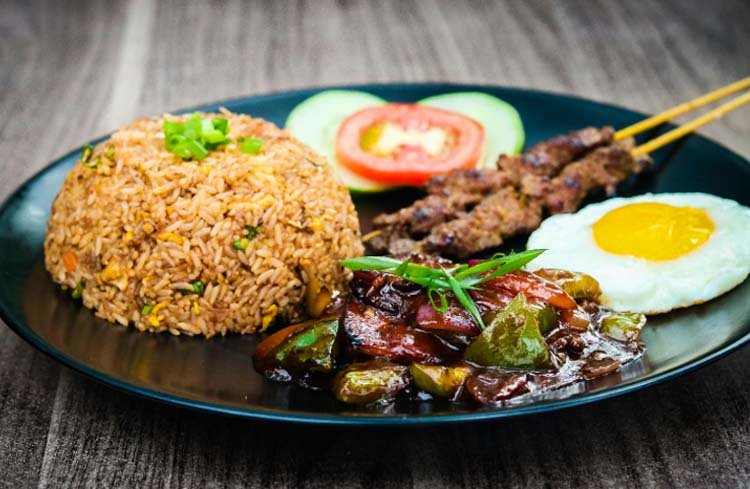Discover a delicious culinary adventure with our step-by-step recipe for Nasi Goreng, a classic of Indonesian cuisine. With intense flavors and irresistible textures, our Nasi Goreng will transport you to the vibrant street markets of Indonesia. Learn how to make this iconic dish with fried rice, fresh vegetables, and a variety of protein options. Surprise your friends and family with an authentic and tasty dining experience today!

Nasi Goreng and health benefits
Nasi Goreng, as a main dish, can have some health benefits, especially if prepared with fresh ingredients and balanced with an overall healthy diet. Here are some possible health benefits associated with this dish:
- Protein source: Depending on the ingredients used, such as chicken, shrimp or tofu, Nasi Goreng can provide a good amount of protein, which is essential for muscle health, cell repair and overall body function.
- Nutritious vegetables: Nasi Goreng often contains a variety of vegetables such as onion, carrot and peas, which are rich in vitamins, minerals and antioxidants. These nutrients are important for maintaining a healthy immune system and preventing disease.
- Optional brown rice: If brown rice is used instead of white rice, Nasi Goreng can be a good source of complex carbohydrates and dietary fiber, which helps maintain stable energy levels and promote digestive health.
- Adaptability to specific diets: Nasi Goreng can be adapted to suit different dietary needs, such as gluten-free, vegetarian or vegan diets, making it a versatile option for a variety of lifestyles and dietary preferences.
- Balanced fat consumption: Depending on the amount and type of oil used in the preparation, Nasi Goreng can provide healthy fats in moderate amounts, which is important for the absorption of fat-soluble vitamins and cardiovascular health.
However, it is important to note that Nasi Goreng can be high in calories and sodium depending on the amount of oil and soy sauce used in the recipe, as well as any additional seasonings. As with any food, balance and moderation are key to enjoying the health benefits without overdoing it on unwanted calories or nutrients.
History of Nasi Goreng

The history of Nasi Goreng is fascinating and deeply rooted in Indonesian culinary culture. Although the exact roots of this recipe are difficult to trace precisely, Nasi Goreng is believed to have its origins in colonial Indonesia and has become an iconic dish of the country's cuisine.
During the colonization of Indonesia by the Dutch in the 17th and 18th centuries, a fusion of cultures and cuisines occurred that profoundly influenced the region's gastronomy. Dutch colonizers introduced ingredients such as rice, onions and carrots, which were combined with local spices and cooking techniques.
Nasi Goreng, which literally means “fried rice” in Indonesian, has become a popular way to make the most of leftover cooked rice and other available ingredients. It was prepared in Indonesian homes and also sold in the bustling street markets of Indonesian cities and towns.
Over time, Nasi Goreng has been adapted and customized in different regions of Indonesia and beyond, with variations including local ingredients and regional preferences. Today, Nasi Goreng is considered a national dish of Indonesia and is served in restaurants and homes across the country, as well as in Indonesian restaurants around the world.
The popularity of Nasi Goreng has also spread to other Southeast Asian countries, where it is enjoyed as a comforting and flavorful dish that represents the rich culinary diversity of the region.
Maybe you might like: How to prepare Cheese
Image credit: Pexels



